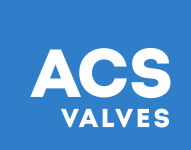
For those who hate saying goodbye
Your valve has led such a long, fulfilling life. But bless her—and yes she’s a lady—she’s not working as she used to.
And as we reflect on all of the things our valves do for us during their lifecycle, we might ask ourselves what caused such a heavy-duty piece of machinery to move from being a youthful spring chicken, to that geriatric hunk of metal sitting in our system.
So before you lay your valve in its final resting place and select its replacement, here are some tips on how to extend your new valve’s life—before it even begins.
What are the signs of wear on your valves?
Before we get into these tips, here’s how to recognize the signs that your valve might be getting old.
One of the most obvious signs of wear is air leakage, known as blow-by, through the vanes of the rotor. This can lead to reduced efficiency in material flow in your system, which can be seen as far as the end of your production line, where material output could be smaller than expected. You may also see material actually come up through the outlet of the rotary valve, showing that there is no longer an air-tight seal.
Preventative coatings & valve material design
Corrosive material can also compromise the integrity of the valve. In this case, a method to increase the life expectancy of a standard valve is to add a preventative coating. Coatings can be applied in the housing of your rotor, as well as on the endplates. Coatings include hard chrome for mild to moderately corrosive materials, and heavy plating for more abrasive materials. For extremely abrasive or corrosive materials, add a tungsten coating.
Prevention also comes in the rotor’s material. For corrosive or wet materials, use an AR-400 steel or a stainless steel rotor to prevent the rotor from rusting. For abrasive or highly abrasive material, we will do a mild steel or an AR-400 steel rotor with a tungsten coating, or both of those combined with a tungsten coating.
Valve size
For conveying lines with larger capacity needs, a larger valve might be required. With valves that are more than 10 inches, the rotors have more opportunity to create more air in their pockets. By putting in more than the standard eight vanes, and going to 10 or 12 vanes, you will prevent airflow from coming back into the valve on the outlet valve and creating wear due to blow-by. This is also where a housing vent port is necessary. It will properly vent excess air and prevent the material from creating a cyclonic material flow that’s not dropping through the outlet flange, and causing more abrasion inside the rotor housing.
Housing vent ports are necessary for any rotor that has more than 10 vanes, or has a pneumatic conveying pressure above 6 PSI.
Maintenance for NFPA compliance
Make sure you have a maintenance log for your valves. We recommend checking them every three months. This can help ensure that your valves are staying NFPA compliant. Remove your endplates, check your bearings and seals, and measure your rotor-to-housing clearance. Make sure you’re doing proper lockout procedures before any preventative maintenance to properly turn every piece of machinery off.
It’s a good idea to have an NFPA Preventative Maintenance Kit on hand in case your rotor needs replacing. This way, you won’t be at risk of non-compliance while you wait for a customized rotor to arrive on your plant floor.
Seal Types
We recently wrote a blog focused on seal types. It’s important to note that replacing your seals will keep your endplates from damage, and ultimately increase the lifespan of your entire rotary valve.
With fine powders, options like the air purge shaft seal will protect your endplate and bearings from collecting dust that escapes through open end rotors. This type of seal pushes the material into the veins where they belong instead of against the end plates where they could be creating wear.


